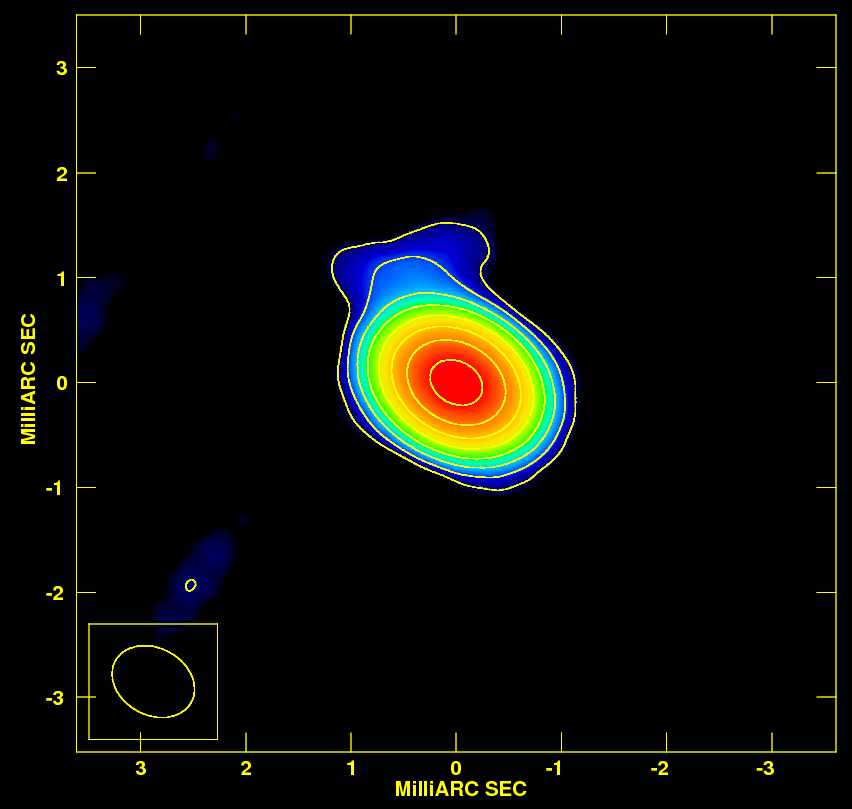Daily Image
04-03-2011First global e-VLBI experiment reveals relativistic jet in a Narrow Line Seyfert 1 galaxy
| Submitter: | Zsolt Paragi |
| Description: | Radio-loud narrow line Seyfert 1 (NLS1) are Active Galactic Nuclei that have received considerable attention lately, since they pose a challenge to current unified schemes. Only a small percentage (about 7%) of NLS1 are radio-loud and in these cases the flat radio spectra and VLBI variability suggest that they could host relativistic jets. The detection by the Large Area Telescope (LAT) on board Fermi of gamma-rays from a handful of NLS1 has recently set the definitive confirmation of the presence of a relativistic jet in these sources. A multi-wavelength campaign was organized to investigate the properties of NLS1 PMN J0948+0022, including a series of global e-VLBI observations between April and July 2009. The observing frequency was 22 GHz and the participating telescopes were Cambridge, Effelsberg, Jodrell Bank, Medicina, Metsahovi, Onsala, Shanghai, and Yebes from the EVN; Hobart, Mopra, Parkes, and the ATCA from the LBA; and Kashima in Japan. This was the first scientific experiment using a truly global array connected in real time. The source was clearly detected on baselines longer than 900 million wavelengths (longest baseline Hobart-Jodrell Bank: 12,486 km), resulting in a resolution of about 0.2 x 0.5 milliarcsecond (see image). Polarized emission was also detected at a significant level. The results of the multi-wavelength campaign (which has involved several instruments and satellites from radio to the gamma-rays) were already published earlier by Abdo et al. (2009, ApJ 707, 727), while the details of the e-VLBI data analysis were published by Giroletti et al. in a research letter that appeared in the 2 March 2011 issue of Astronomy and Astrophysics. See also the press release. |
| Copyright: | Marcello Giroletti |
| Tweet |  |
